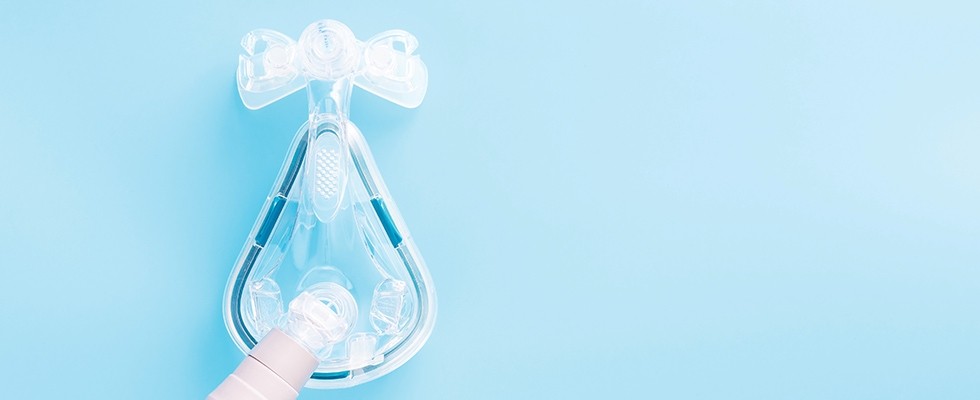
The medical device maker ResMed presented 13 new clinical studies at the recent SLEEP 2024 conference, which is the joint meeting of the American Academy of Sleep Medicine and the Sleep Research Society. The studies were wide-ranging but focused on demonstrating the value of positive airway pressure (PAP) treatment for obstructive sleep apnea (OSA).
The peer-reviewed studies were conducted by researchers at ResMed and at universities around the world. The company’s efforts to expand the body of knowledge around sleep therapies are designed to help ResMed and the broader medical community, said Carlos M. Nunez, ResMed’s chief medical officer.
“The real-world evidence used in our clinical research continues to demonstrate the effectiveness of PAP therapy for treating OSA,” Nunez said. “The studies presented at SLEEP 2024 expand our understanding of patients with sleep disorders by examining critical areas such as the effect of demographic factors like gender on sleep health.”
Some of the details that came out of the projects include:
- Approximately 17% of all adults in Northern America, Latin America and the Caribbean suffer from insomnia.
- Sleep should be a greater focus of public health initiatives.
- Hospitalizations and emergency room visits for people with OSA were lower among those who consistently adhered to PAP therapy than those with lower adherence rates.
- OSA patients who have depression were more likely to fall off adherence to therapy than those who don’t—especially women.
Three studies seemed to be of particular interest to homecare providers:
An Estimate of the Prevalence of OSA in the United States Into 2050
By 2050, there will be some 76 million adults aged 30-69 in the United States with obstructive sleep apnea (OSA), according to this study, which sought to give a sense of the future need for treatment for the condition. That’s a 33% increase in OSA cases, the researchers found.
They also estimated there would be 43 million cases of moderate to severe OSA, as defined by those with an apnea-hypopnea index (AHI)—the average number of apneas and hypopneas that occur per hour of sleep—higher than 15 per hour. OSA in general was defined as more than five incidents per hour. They figured a 28% increase in moderate to severe OSA compared to 2020 estimates.
Women are likely to become a larger share of OSA sufferers, the paper found, with 29 million expected to have it by 2050, or 35% of apnea patients.
“Preventative strategies and resource allocation should be considered to address this major public health problem,” the paper reads. “Future simulations could consider the potential impact of weight management approaches, other risk factors, as well as the impact of OSA in elderly, pediatric and other cohorts."
A Mixed-Methods Exploration of Patient Perspectives on PAP Therapy Initiation: Implications for Improved Outreach and Education
Patients need more support during the start of PAP therapy, including increased education and outreach about what to expect from the treatment and improved interactions between durable medical equipment (DME) providers and health care providers (HCPs), this study concluded.
“Incorporating resources like virtual chat support and follow-up from HCPs as needed within the early therapy initiation period holds promise for improving the overall patient experience and, in turn, possibly leading to higher PAP therapy usage rates,” the researchers wrote.
They analyzed 3,824 survey responses and focused in on 110 of them to look at themes like mask fit and comfort, pressure adjustments and outreach and education at the start of therapy. Many said they wanted more information on what to expect during therapy, how to adjust pressure on their device and how to trouble-shoot mask fit issues.
“The importance of improving communication between health care providers (HCPs) and patients to personalize treatment based on individual needs emerged as an important consideration,” they found. “Positive relationships with HCPs and DME suppliers during the therapy initiation period can influence subsequent therapy experiences.”
Helping with settings and mask fit early on can also help alleviate concerns about nighttime waking and partner disturbance, they found.
Tailoring Social Support to Improve PAP Therapy Usage in Obstructive Sleep Apnea
Researchers looked into how the dynamics of peer support, which has been shown to help promote the use of PAP therapy, can shift based on patient demographics and other factors. They asked a group of U.S.-based patients using prescribed PAP therapy how often their partners tracked their PAP usage and then examined whether the patient’s characteristics and type of therapy—including mask type—factored into whether their partner monitored them and how much.
The researchers received 8,220 survey responses and found that those who did not meet Medicare criteria for 90-day compliance were more likely to have a partner monitor them. Younger respondents—those under 55 versus those 65 and older—also had better odds of partner monitoring. Baseline AHI and the length of time that
people used the device didn’t turn out to be predictive.
“Designing social support interventions based on contextual factors like patient age, gender, current PAP usage and equipment type will help determine when the benefit of partner engagement is likely to be optimized,” the authors wrote.
